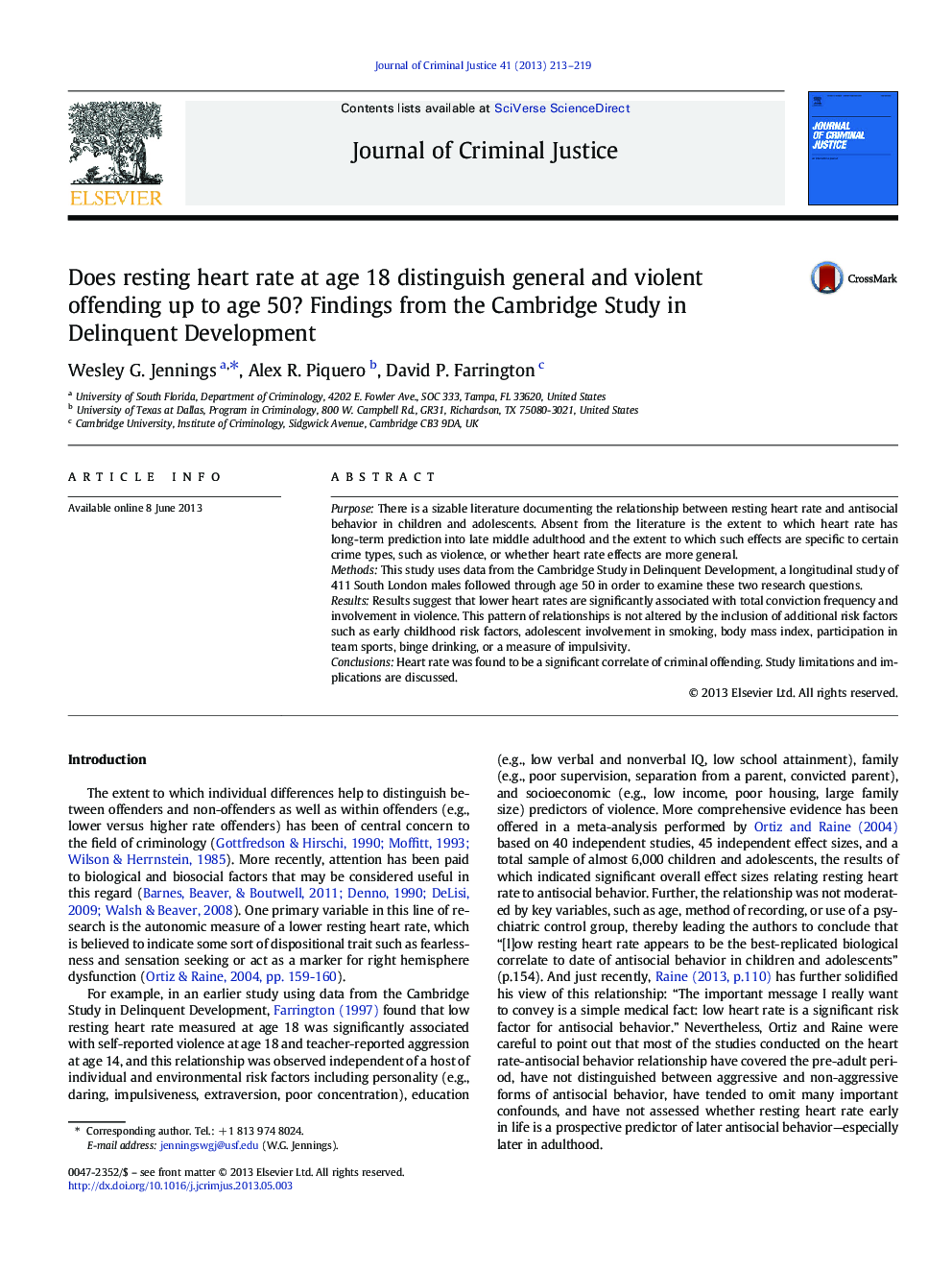| Article ID | Journal | Published Year | Pages | File Type |
|---|---|---|---|---|
| 882828 | Journal of Criminal Justice | 2013 | 7 Pages |
•Lower resting heart rates are associated with total convictions and violence by age 50.•This effect was not altered by the inclusion of other risk factors.•This effect was always related to offending and un-mediated by other risk factors.
PurposeThere is a sizable literature documenting the relationship between resting heart rate and antisocial behavior in children and adolescents. Absent from the literature is the extent to which heart rate has long-term prediction into late middle adulthood and the extent to which such effects are specific to certain crime types, such as violence, or whether heart rate effects are more general.MethodsThis study uses data from the Cambridge Study in Delinquent Development, a longitudinal study of 411 South London males followed through age 50 in order to examine these two research questions.ResultsResults suggest that lower heart rates are significantly associated with total conviction frequency and involvement in violence. This pattern of relationships is not altered by the inclusion of additional risk factors such as early childhood risk factors, adolescent involvement in smoking, body mass index, participation in team sports, binge drinking, or a measure of impulsivity.ConclusionsHeart rate was found to be a significant correlate of criminal offending. Study limitations and implications are discussed.
